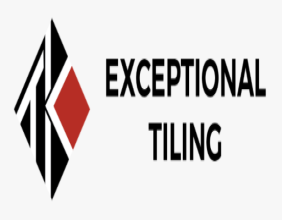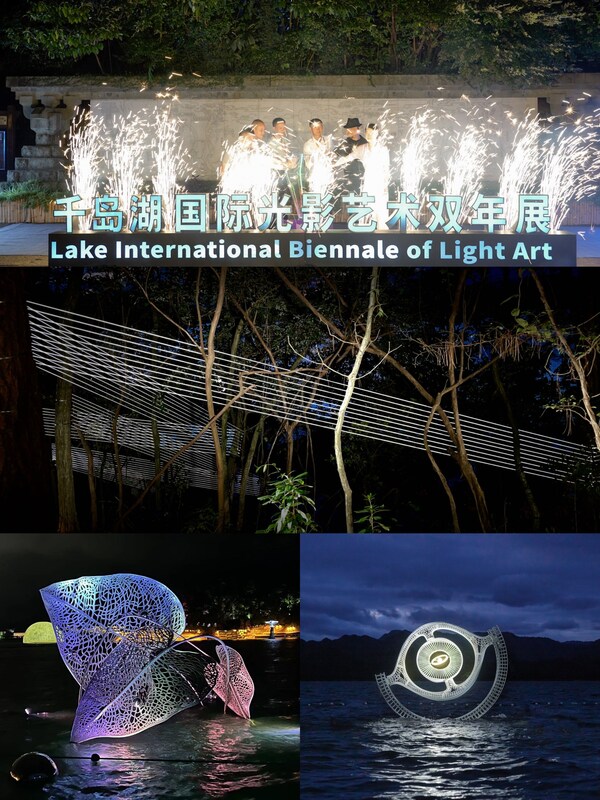HANGZHOU, China, Sept. 25, 2024 /PRNewswire/ -- The opening ceremony of the second Illuminate the World: Qiandao Lake International Biennale of Light Art and Qiandao Lake Tunnel Art Museum took place at Qiandao Lake in Zhejiang Province, China on September 21, 2024. The event marks another collaboration between China Academy of Art (CAA) and Qiandao Lake, Chun'an County that resulted in their second rendition of China's first aquatic biennial exhibition with the art of light as its medium.
The theme of the biennial exhibition is "How Is Light?" It reflects how the exhibition takes into account the forms of light in the evolution of industrial technology, foundation of civilization and innovation through the ages and a call to expand our understanding of light beyond the constraints of existing forms, into greater imaginative spaces with greater possibilities. Thus, the focus of the exhibition leans towards artworks that explore technology, interaction and ecosystems.
The second Qiandao Lake International Biennale of Light Art adopted a selection process that combined open submissions and special invitations. Over 200 submissions from eight countries were received and reviewed by an expert panel before the final submissions were selected. The selected artworks will be showcased at Yueguang Island, Qiandao Lake in two phases alongside those from the first biennale in a multilayered approach that will enrich Qiandao Lake's artistic ecosystem. This approach highlights the biennale's core objectives of promoting local economy through art and cultural tourism while paving the way for green and ecological development. Cross-disciplinary creators such as renowned rock musician Cui Jian have also been invited to the biennale, expanding the potential for experimentation at an event distinguished by its focus on the art of light as a medium, public art and aquatic spaces.
The Qiandao Lake Tunnel Art Museum was inaugurated on the same day. The art museum is a cluster of art galleries that comprises nearly 100 tunnels. Qiandao Lake Tunnel Art Museum NO. 001, which is presently located at Xialanwu Tunnel and stretches across 209 meters, was designed by CAA's School of Painting. As China's first tunnel art museum, it bears contemporary elements that target the international audience, and aims to create spatial aesthetics with contemporary art. The space is an open "unwalled art museum". Besides serving as an urban tourist attraction and a jogging trail, it is also an exhibition space for international artists where the public may enjoy public art.
Qiandao Lake Tunnel Art Museum's opening exhibition showcases artworks of international residents centered around the theme of "Echo". Beyond the mirroring and repetition of voices in space, "Echo" symbolizes the spatial and temporal synergies of Qiandao Lake's natural landscape, cultural heritage and ecological preservation. Through murals and public art, the exhibition showcases the scenes of Qiandao Lake's past and present and reflects the dialogue between humankind and nature as well as the connection between the past and future. The curvature of the tunnel amplifies the sense of being enclosed while symbolizing the persistence of echoes through time. Standing in the tunnel, one feels as if they are standing in the heart of Qiandao Lake, feeling the heartbeat and breathing of its artworks.
Qiandao Lake is the apple of the Chinese local cultural tourism industry's eye while CAA is the engine driving Chinese contemporary art. Their continual partnership to develop social aesthetic education through the use of public spaces and nature has led to the creation of a vibrant Qiandao with local features and Chinese cultural characteristics.
About the Theme of the Second Qiandao Lake International Biennale of Light Art: How Is Light?
The biennale goes beyond the exploration of the traditional definition of light as "natural light", "artificial light" and their contemporary evolutionary product "digital light" to showcase the changing forms, technical foundations and applications of light. When it comes to technology and industries − from the Fourier transform to the design of a chip, from color management to the conversion of vector graphics to numbers and formulas, from LED screens to image processing software, from handheld devices to screens at stadiums and plazas − light plays a role in our everyday life. It dominates our visual culture.
On the front of science, the scientific community has known about light for a very long time. Yet there was no consensus on what light is until the mid-19th century. The British physicist James Clerk Maxwell discovered that all forms of electromagnetic radiation come together to form a continuous spectrum and that they travel through vacuum at the same speed. The German physicist Philipp Lenard discovered the photoelectric effect. In the early 20th century, Albert Einstein hypothesized that light might possess properties we associate with particles. Einstein's theory was validated by experiments conducted by the American physicist Arthur H. Compton, who proved that photons have momentum, an essential condition supporting the theory that matter and energy can be interchangeable. The French scientist Louis-Victor de Broglie drew the relationship between wavelength and particle mass and energy. His discovery explained how light possesses both properties of a wave and particle.
Nevertheless, light isn't simply the basis for modern vision. It is also closely linked to the foundation of civilization. The ancient Greek philosopher Plato came up with the allegory of the cave through the description of fire, natural light and shadow. The allegory is a philosophical, epistemological and ethical meditation on the existence of the world, an expression of one's views on art, and a story of enlightenment. In ancient China, light is emphasized in a holistic theory on the creation of the universe. In the Canon of Yao in the Book of Documents, it was written, "to calculate and delineate (the movements and appearances of) the sun, the moon, the stars, and the zodiacal spaces, and so to deliver respectfully the seasons to be observed by the people." This suggests that the observation of the celestial bodies through the use of light has not only affected the way we perceive spaces but also led to the establishment of rites and rituals.
The theme of the second Qiandao Lake International Biennale of Light Art is thus set as "How Is Light?" to take into account the forms of light in the evolution of industrial technology, foundation of civilization and innovation through the ages. It is also a call to expand our understanding of light beyond the constraints of existing forms, into greater imaginative spaces with greater possibilities. We hope that these new possibilities may lead to more ideas in the realms of technology, interaction and ecosystems.
"How Is Light?" is a description and a question—how does an artist preserve tradition and innovate while contending with what we know about light and shadow? This is not just an epistemological challenge, it is a question about methodology and artistic intervention. Importantly, it is a test of the imagination. When we ask "How Is Light?", we are asking what else there is beyond what we already know.
About the Theme of the Qiandao Lake Tunnel Art Museum's Opening Exhibition: Echo
Qiandao Lake, hailed as heaven on earth, has always been a paradise where culture and nature intertwine. At Qiandao Lake, the sounds of nature, traces of the past and modern ecological expectations converge. The exhibition is located in the tunnel, whose curvature amplifies the sense of being enclosed while symbolizing the persistence of echoes through time. Standing in the tunnel, one feels as if they are standing in the heart of Qiandao Lake, feeling its heartbeat and breathing.
About the Festivals and Exhibitions Organized by CAA's School of Sculpture and Public Art
The festivals and exhibitions that CAA's School of Sculpture and Public Art has launched and kept going in recent years include "Wuzhen Theatre Festival: Public Space Art Exhibition Project", "Aranya Theater Festival: Migratory Birds 300", "CAA Armory•Wuzhen", "Illuminate the World: Qiandao Lake International Biennale of Light Art", "Hangzhou Triennial of Fiber Art", and "Frontier Fiber Art Exhibition". They form a vast network for artistic research and creation.





